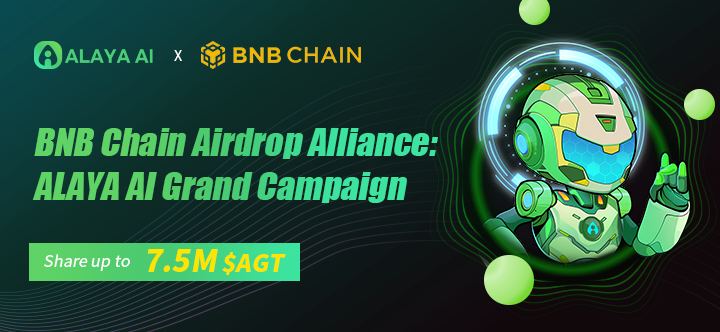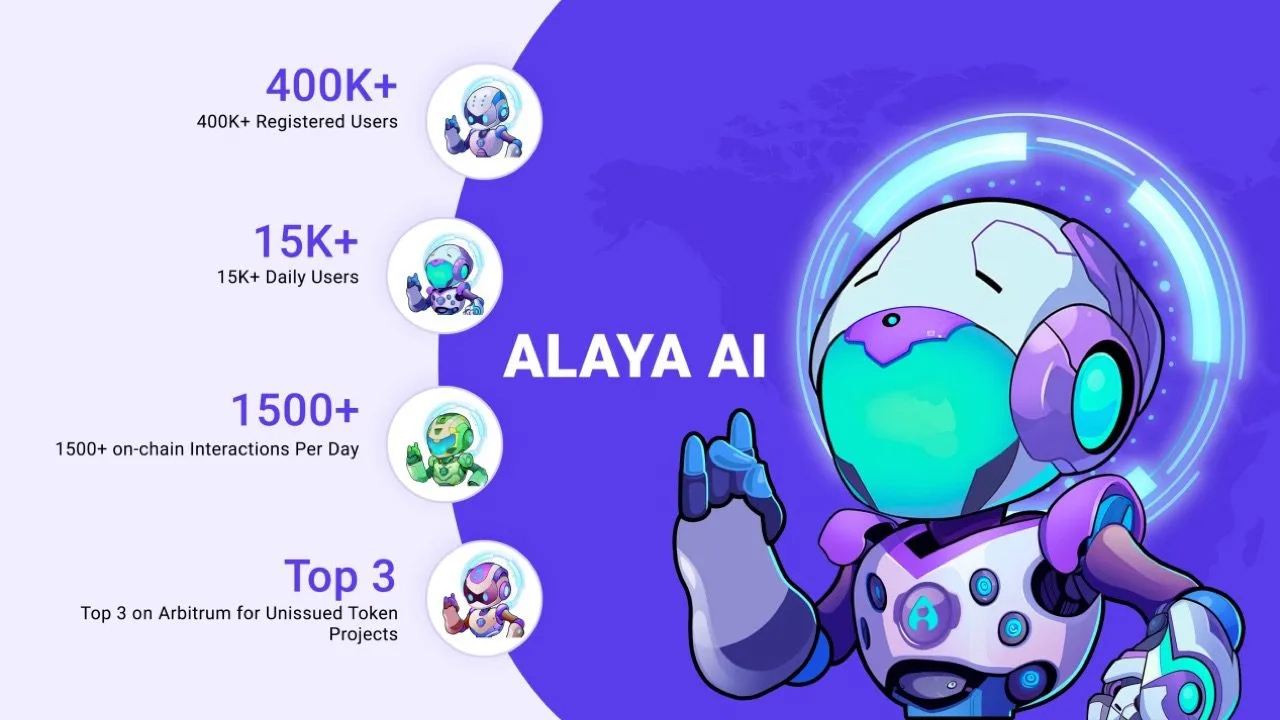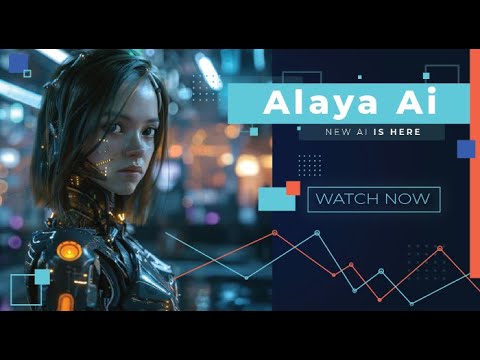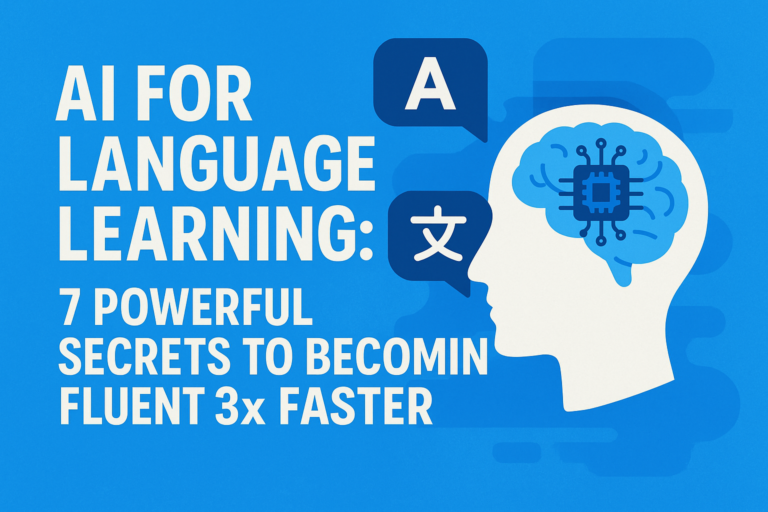Introduction: Navigating the Dynamic AI Landscape
The artificial intelligence revolution is reshaping industries at an unprecedented pace, with innovative platforms emerging to address complex data processing challenges. Among these groundbreaking solutions, Alaya AI stands out as a transformative distributed AI data collection and labeling platform that combines blockchain technology with intelligent optimization.
This comprehensive guide provides an in-depth exploration of Alaya AI, examining its core features, practical applications, benefits, and competitive positioning in the rapidly evolving AI landscape. Whether you’re a business leader evaluating AI solutions, a developer exploring integration possibilities, or simply curious about the future of decentralized AI data processing, this analysis will equip you with the knowledge needed to understand and leverage this innovative technology’s potential with Alaya AI.
I. What is Alaya AI? Understanding the Fundamentals

Alaya AI is a distributed AI data collection and labelling platform with intelligent optimisation, targeted sampling, custom preprocessing and superior privacy. According to recent industry reports from MIT Technology Review, decentralized AI platforms are revolutionizing how businesses approach data processing and machine learning model training.
Core Technological Foundations
Alaya AI platform’s architecture is built upon several fundamental pillars:
Blockchain Integration: Unlike traditional AI platforms, this solution integrates blockchain technology to create a secure, decentralized ecosystem for data collection and processing. This approach ensures data integrity while enabling transparent reward distribution through its native AGT token system.
Natural Language Processing (NLP): The platform employs advanced NLP capabilities that enable seamless interpretation of human language, context understanding, and nuanced communication. Research from Stanford AI Lab demonstrates that sophisticated NLP allows users to interact with AI systems using natural language queries, making complex functionality accessible to non-technical users.
Machine Learning Algorithms: The system utilizes sophisticated machine learning engines that continuously learn from user interactions, data patterns, and environmental changes. This adaptive learning approach ensures improved accuracy and efficiency over time.
Gamification Elements: One of its standout features is the gamified user interface, which makes data collection and labeling engaging and rewarding for users. Participants can earn rewards in the form of Alaya’s native $AGT token by completing data-related tasks.
II. How Alaya AI Operates: Mechanism and Interaction
Alaya AI platform utilizes sophisticated algorithms and machine learning techniques, analyzing vast amounts of data in real-time, providing businesses with actionable insights that drive efficiency and productivity. The system processes information through advanced neural networks that analyze data patterns, user behavior, and contextual factors to generate intelligent responses and recommendations.
User Interaction Model
Alaya AI platform offers multiple interaction modes designed to accommodate different user preferences and technical skill levels:
Gamified Interface: Users engage through an interactive, game-like environment where they complete data annotation tasks while earning digital rewards. This approach democratizes AI data collection by making it accessible and engaging for diverse user groups.
API Integration: For developers and technical teams, robust API connectivity enables integration with existing systems, third-party applications, and custom solutions. According to Harvard Business Review, this flexibility ensures organizations can seamlessly incorporate AI capabilities into their established workflows.
Blockchain Marketplace: Alaya AI features a secure marketplace where users can trade unique NFTs and digital assets, creating an economy around AI data collection and processing.
III. Diverse Applications: Where Advanced AI Platforms Excel
The platform’s versatility makes it suitable for a wide range of applications across various industries:
Data Collection and Annotation
Alaya AI is designed to gather data from a wide range of sources, including social media, websites, sensors, and more. This extensive data collection is powered by advanced data crawling capabilities that ensure comprehensive data acquisition for AI model training.
Healthcare and Medical Research
The technology revolutionizes healthcare by providing intelligent data processing for medical research, patient diagnosis support, and treatment optimization. The platform’s ability to process vast amounts of medical data while maintaining privacy compliance makes it invaluable for healthcare institutions.
Financial Services and Analysis
In the financial sector, the platform provides sophisticated analysis capabilities for risk assessment, fraud detection, and market analysis. The alaya ai crypto integration allows for advanced cryptocurrency market analysis and blockchain transaction processing.
Content Creation and Marketing
This AI solution supports content creators by generating high-quality copy, optimizing content for different channels, and personalizing messaging based on audience segments. This capability extends to social media management and comprehensive content strategy development.
Supply Chain and Logistics
Alaya AI streamlines supply chain operations through intelligent tracking, predictive analytics, and automated decision-making processes. Organizations can leverage these capabilities to optimize inventory management and improve delivery efficiency.
Gaming and Entertainment
Alaya AI platform offers engaging quizzes for users to earn digital asset rewards, and a secure marketplace for trading unique NFTs by integrating blockchain and AI, creating immersive experiences for users.
IV. Key Benefits: Why Businesses Choose Advanced AI Solutions
Enhanced Data Quality and Accuracy
This mix speeds up labeling while maintaining accuracy, which helps teams manage large datasets. The platform’s sophisticated algorithms ensure high-quality data annotation and processing, crucial for training effective AI models.
Cost-Effective Solutions
The platform offers unmatched speed and cost-effectiveness, leaving conventional data annotation companies behind. Organizations achieve significant cost savings through automated processes and reduced manual intervention requirements.
Decentralized Community Benefits
The Alaya AI leverages community-driven data collection, creating a collaborative ecosystem where participants are incentivized to contribute high-quality data. This approach ensures diverse, comprehensive datasets while reducing centralized infrastructure costs.
Scalable Architecture
The distributed nature of the platform allows for seamless scaling with organizational growth, adapting to increased data volumes without proportional increases in infrastructure costs.
Blockchain Security and Transparency
By integrating blockchain technology, the platform provides enhanced security, transparent transactions, and immutable data records, addressing critical concerns about data integrity and privacy.
V. Challenges and Considerations: Understanding the Limitations of Alaya AI
Technical Implementation Complexity
While Alaya AI offers user-friendly interfaces, implementing advanced AI solutions in complex organizational environments may require technical expertise and careful planning. Organizations should consider integration challenges and staff training needs.
Market Maturity and Adoption
As a relatively new platform in the AI space, market adoption may take time. Organizations should evaluate long-term viability and community growth when making implementation decisions.
Regulatory Compliance
The integration of blockchain technology and token-based rewards may present regulatory challenges in certain jurisdictions. According to Brookings Institution, organizations must carefully consider compliance requirements for blockchain-based AI platforms.
Learning Curve Requirements
Users may require time to understand the gamified interface and blockchain integration aspects. Proper training and support are essential for maximizing platform benefits.
VI. Getting Started: A Step-by-Step Implementation Guide Alaya AI
Initial Platform Setup
- Account Registration: Create a platform account and complete identity verification in Alaya AI
- Wallet Configuration: Set up a compatible cryptocurrency wallet for token transactions
- Profile Optimization: Complete user profile and specify areas of expertise
- Initial Task Completion: Begin with simple data annotation tasks to familiarize yourself with the interface
Advanced Implementation
- API Integration: Connect existing systems through provided APIs
- Custom Task Creation: Develop specialized data collection and annotation projects
- Community Engagement: Participate in platform forums and collaborative projects
- Performance Monitoring: Track task completion rates and reward accumulation
For comprehensive guidance on AI implementation strategies, refer to MIT’s AI Implementation Guide.
VII. Alternatives and Competitive Landscape: Making Informed Choices
The AI data platform market offers various alternatives, each with distinct approaches:
Traditional Platforms: Solutions like Scale AI and Labelbox provide enterprise-grade data annotation services with established workflows and client bases.
Blockchain-Based Competitors: Platforms like Ocean Protocol and Fetch.ai offer decentralized AI and data marketplaces with different technological approaches.
Enterprise Solutions: Amazon SageMaker and Google Cloud AI Platform provide comprehensive AI development environments with extensive infrastructure support.
Open Source Alternatives: Tools like Label Studio and CVAT offer free, customizable solutions for organizations with technical expertise.
When evaluating alternatives, consider factors such as community size, token economics, technical support, and integration capabilities. For detailed comparisons, consult Forrester’s AI Platform Evaluation.
VIII. The Future of Decentralized AI and Industry Trends
Anticipated Technological Developments
Advanced AI platforms are positioned to incorporate emerging technologies such as federated learning, enhanced privacy preservation, and cross-chain interoperability. According to Deloitte’s AI Report, future developments may include expanded multi-modal capabilities and improved automated quality control.
Industry Impact and Transformation
The evolution of decentralized AI platforms aligns with broader trends toward data democratization, community-driven development, and tokenized economies. This alaya ai review perspective suggests that platforms incorporating blockchain technology will play increasingly important roles in AI development.
Strategic Market Positioning
Organizations implementing decentralized AI solutions build capabilities that align with future technological trends including Web3 integration, decentralized autonomous organizations (DAOs), and community-governed AI development.
Research from World Economic Forum indicates that decentralized AI adoption will continue accelerating across industries, driven by improved data quality, reduced costs, and enhanced privacy protection.
IX. Best Practices for Optimal Platform Utilization
Strategic Implementation Approach
- Start with Simple Tasks: Begin with basic data annotation to understand platform mechanics
- Community Engagement: Actively participate in platform communities for knowledge sharing
- Quality Focus: Prioritize accuracy over speed to build reputation and maximize rewards
Technical Optimization
- API Integration: Leverage APIs for seamless workflow integration
- Performance Monitoring: Track task completion rates and optimization opportunities
- Security Measures: Implement robust wallet security and account protection protocols
Long-term Success Strategies
- Continuous Learning: Stay updated with platform developments and feature releases
- Network Building: Develop relationships within the platform community
- Diversification: Explore various task types and specialization areas
Conclusion: Embracing Decentralized AI for Future Success
The emergence of blockchain-integrated AI platforms represents a significant evolution in artificial intelligence technology. The combination of sophisticated data processing capabilities, community-driven development, and transparent reward systems creates compelling value propositions for organizations and individuals alike.
The platform’s ability to democratize AI data collection while maintaining quality standards positions it as a valuable tool for the future of AI development. As the technology landscape continues evolving toward decentralization and community governance, platforms that successfully integrate these principles will lead industry transformation.
For organizations and individuals considering involvement in decentralized AI ecosystems, comprehensive evaluation of available platforms offers opportunities to participate in the future of AI development while generating tangible value through contribution and collaboration.
The convergence of artificial intelligence, blockchain technology, and community-driven development creates unprecedented opportunities for innovation and value creation in the digital economy.
Frequently Asked Questions (FAQs)
Q1: What technical skills are required to use the platform effectively? The platform is designed for users with varying technical backgrounds. While basic computer skills are sufficient for simple tasks, advanced features may benefit from familiarity with APIs and blockchain technology.
Q2: How are rewards calculated and distributed? Rewards are calculated based on task complexity, accuracy, and completion time. The platform uses smart contracts to ensure transparent and automatic reward distribution in AGT tokens.
Q3: Can the platform integrate with existing business systems? Yes, the platform provides comprehensive API connectivity supporting integration with most business software, databases, and third-party applications through standard protocols.
Q4: What industries benefit most from decentralized AI data platforms? Healthcare, financial services, autonomous vehicles, and research institutions benefit significantly from high-quality, diverse datasets provided by decentralized platforms.
Q5: How does the platform ensure data quality and accuracy? The platform employs multiple validation mechanisms including peer review, automated quality checks, and reputation-based scoring to maintain high data standards.
Q6: What are the minimum requirements for platform participation? Basic requirements include a compatible device, internet connection, and cryptocurrency wallet. No specialized hardware or software is required for most tasks.
Q7: How does token economics work within the platform ecosystem? The AGT token serves as the primary reward mechanism, with value determined by platform utility, community participation, and market demand. Tokens can be earned through task completion and traded in supported marketplaces.





